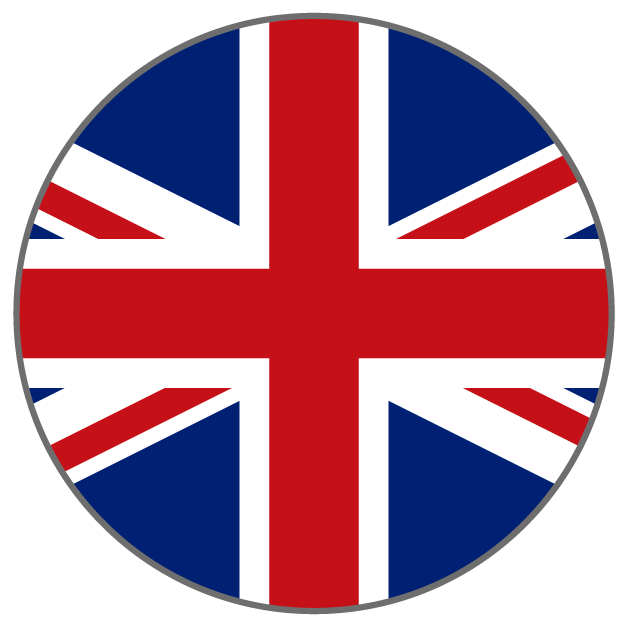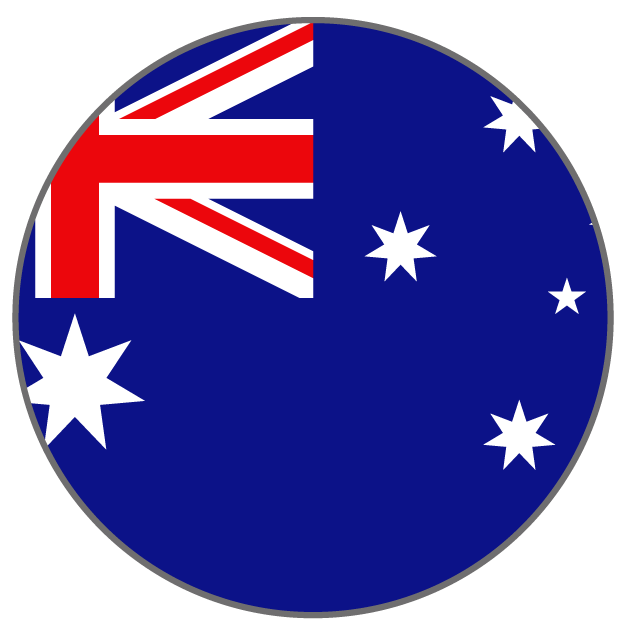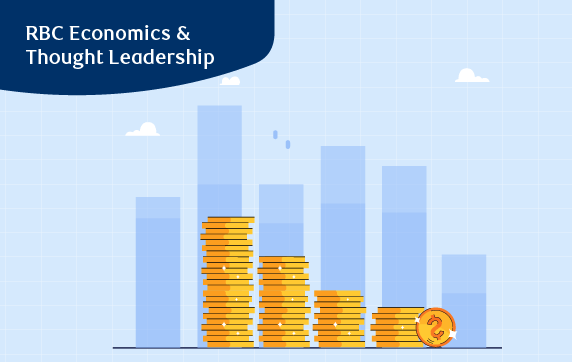
Take it easy, higher Fed terminal and weaker loonie shouldn’t make the BoC queasy
Highlights:
- With the run of exceptional U.S. data continuing, we no longer expect any further rate cuts from the Fed in 2025 and think they have already reached a terminal of 4.25% to 4.5%.
- Common risk factors like trade uncertainties are still lurking but we expect domestic economic factors will increasingly drive inflation trends in 2025, leading central banks to leave interest rates at varying terminals this year relative to their long-run neutral targets.
- We expect persistent weakening in the Canadian economy driving the Bank of Canada to cut the overnight rate to a “stimulative” 2%, while the Bank of England and European Central Bank lower rates to ~neutral.
Issue in focus: Recent softening in the Canadian dollar has ignited concerns over the impact of rising import costs on the economy. But like the Eagles sing in Take It Easy, we don’t expect a weaker loonie, the sound of the wheels of an underperforming economy will prevent the BoC from cutting interest rates.
Forecast change: Resilient U.S. economy pushes Fed to sidelines early
An exceptional U.S. economy has shown little evidence of losing momentum. Job markets continued to post gains in December, and a very gradual lift in unemployment over the last year is still consistent with a normalizing, rather than faltering economy. U.S. equity markets early in 2025 also remain close to record highs, outpacing gains in other parts of the world.
The resilience in the U.S. economic backdrop is driven in no small part by an enormous government budget deficit, particularly large for this point in the economic cycle. In 2025, we continue to expect that will keep a floor under both growth in domestic activities and inflation, with potentially disruptive trade and immigration policies adding to upside inflation risks.
To offset loose fiscal policy and keep inflation in check, we expect interest rates in the U.S. will need to stay high and restrictive. We now look for the Fed to move to the sidelines earlier and hold the Fed funds target range at its current 4.25% to 4.5% level for the remainder of this year.
Idiosyncratic inflation risks driving monetary policy divergence
Global supply chain constraints and input shortages that drove correlations in inflation and central bank interest rate policy in recent years have largely unwound. Common inflation risks like disruptive trade policies are still lurking but factors tied to differences in domestic demand and supply across regions have become more important drivers of inflation.
In Canada, an economic underperformance compared to global peers stretches on. Annualized Q4 GDP growth is tracking around 1.5%, slightly stronger than our previous assumption although we continue to expect the broader economy and labour conditions will get slightly worse this year before they improve. The unemployment rate is expected to peak at 7%.
With inflation trending lower, the BoC is focused on supporting stronger growth and capping deterioration in labour conditions with more aggressive interest rate cuts. We continue to expect the BoC will keep lowering the overnight rate down to a stimulative 2% by mid-year, and don’t think recent weakening in the Canadian dollar will deter the BoC from additional interest rate cuts—see more in issue in focus below.
Elsewhere, we continue to look for an additional 75 bps of rate cuts from the ECB and 100 bps from the BOE to land key interest rates around respective neutral levels. Heightened uncertainty from the impact of the U.K. government budget means a slower-moving BoE. The bank rate is expected to reach 3.75% in Q4, while the ECB is expected to get to terminal rate sooner by April.
Central bank bias:
Current Policy Rate
(Latest Move)
BoC
As expected, slowing in inflation and the labour market led the BoC in December to cut the overnight rate by another 50 bps to 3.25%. Governor Tiff Macklem’s opening statement at the decision sounded hawkish, effectively closing the door on 50-bps cuts from future meetings this year. Our forecast expects a string of 25-bps reductions over the first half of this year before the overnight rate drops to 2% in July.
 Fed
Fed
4.25-4.50%
-25 bps in Dec/24
The Fed cut rates by 25 basis points in December while signalling a more gradual easing cycle moving forward. Changes to FOMC participant projections reinforced the hawkish shift, with the end of 2025 Fed funds rate moving 50 bps higher to 3.9%. Strength in recent macro data led us to expect the Fed will go on pause earlier, keeping Fed funds rate steady at the current range in 2025.
 BoE
BoE
BoE policymakers voted in favour of a hold in December with a more dovish split (6-3) than we expected. The commentary continued to hint at caution for the rest of the easing cycle amid heightened uncertainties related to the inflation impact from last year’s budget. We maintain our forecast that the BoE will cut at a slower 25 bps per quarter pace until the bank rate reaches 3.75% in Q4 this year.
 ECB
ECB
The ECB lowered the deposit rate by 25 bps to 3% in December, and dropped previous language around the need to “keep rates restrictive.” Debate around the level of neutral rates was set in motion as the central bank nears its terminal rate with cuts in upcoming meetings likely. We think there will be a 25-bps reduction in each of the upcoming three meetings before the deposit rate dropping to a neutral 2.25% by April.
 RBA
RBA
Persistent inflation pressures coupled with a lack of loosening in the labour markets are still holding the Reserve Bank of Australia from kickstarting the easing cycle. The cash rate was held at 4.35% in December as expected with the central bank shifting towards a more dovish stance, laying the foundation for rate cuts to potentially start in 2025. We expect a first cut from the RBA in May.
Issue in focus: Loonie dip, driven by weak fundamentals won’t fuel inflation
A growing policy divergence between the BoC and the Fed, coupled with uncertainties tied to a potential early Canadian election and trade policies, are weighing on the Canadian dollar.
The trade-weighted Canadian Effective Exchange Rate recently dipped to its lowest point since the pandemic, thanks mostly to a depreciation against the U.S. dollar. That’s not the end of it – our base case expects the policy gap between the BoC and the Fed will continue to widen, to more than 200 basis points by mid-2025.
That means a further widening of 125 bps from where the gap is today, which is more than four times the 30 bps of widening that markets are expecting. All else equal, a bigger rate gap implies more softening in the Canadian dollar is still in the hopper. We, however, don’t expect that will stop the BoC from cutting interest rates.
The reason is simple—a softer Canadian dollar driven by a weak economic backdrop isn’t enough to cause inflation to rise. The disinflationary impact of an underperforming economy will outweigh the impact of higher import costs for the smaller share of consumer spending imported from abroad.
Much of what Canadians consume is produced domestically
A smaller share of Canadian consumer spending is imported than what is often thought. About 20% of Canadian final consumption is accounted for by foreign production, half of which comes from the U.S., according to the OECD. The other 10% of imports are from other regions, against which the Canadian dollar has performed better.
A weaker loonie will surely increase the cost of imported goods, particularly products like gasoline, fresh fruits, and vegetables. But for the vast majority of consumer spending that is not imported, weak domestic demand will continue to suppress rather than stoke price pressures.
Indeed, interest rate hikes in the past have dealt a harsh blow to Canadian households. Per-capita real consumer spending in Canada has fallen to 2017 levels and inflation has slowed more significantly as a result. Moving forward, a persistently weak demand will continue to challenge businesses’ ability to pass on cost increases and raise prices. Recent survey results echoed that sentiment, with firms reporting subdued demand, excess capacity, and muted inflationary pressures.
Store prices often move less than exchange rate
The final store shelf price of imported goods also depends heavily on an array of other business expenses, including domestic transportation and storage costs, and wholesale/retail profit margins.
That’s why outside of gasoline, prices for other imported products like electronics tend to move far less in tandem with near-term currency fluctuations. Goods like motor vehicles, which rely heavily on cross-border production are also less sensitive to the exchange rate as the price impact can get washed out from all the re-imports and re-exports of intermediate products at different production stages.
Estimates from the BoC point to a 10% depreciation in the Canadian dollar adding roughly 0.3 percentage points to core inflation over the span of four quarters before fading out. That’s a significant amount, but likely not enough to offset the disinflationary impact of a weakening economy.
Canada’s economy is less vulnerable to a currency spiral
A more concerning scenario is one in which the Canadian dollar weakens beyond what’s warranted by fundamental drivers, like interest rate differentials and international trade risks.
That was the case back in 1998 when the BoC hiked interest rates by 100 basis points to provide support to the currency. At the time, the central bank was worried about persistent Canadian dollar weakness during the late-1990s Asian financial crisis, following a Canadian fiscal crisis and significant recession earlier in the decade.
Still, Canada’s currency risks are very different today than they were back then. In the 1990s, Canada was a large net borrower from the rest of the world, making it vulnerable to a downward currency spiral that can lead to ballooning foreign denominated debt. The Wall Street Journal in 1995 had famously dubbed the Canadian dollar the Northern Peso, following the Mexican Peso crisis.
Today, Canada is a net creditor to the world, with a net international investment position of 61% of GDP as of Q3 2024. It also has a larger amount of foreign currency assets than foreign currency debts held abroad. This means a weaker loonie, on balance, will increase Canada’s national net international investment position when measured in Canadian dollars.
The make-up of Canada’s international balance sheet as a natural hedge against currency weakness is helpful as it retains confidence among investors, making a downward currency spiral less likely to begin with.
See previous editions of Financial Markets Monthly.

This article is intended as general information only and is not to be relied upon as constituting legal, financial or other professional advice. A professional advisor should be consulted regarding your specific situation. Information presented is believed to be factual and up-to-date but we do not guarantee its accuracy and it should not be regarded as a complete analysis of the subjects discussed. All expressions of opinion reflect the judgment of the authors as of the date of publication and are subject to change. No endorsement of any third parties or their advice, opinions, information, products or services is expressly given or implied by Royal Bank of Canada or any of its affiliates.




